Scotland’s new superfruit – the honeyberry
There’s a new Scottish superfruit in town. It’s described as being like a blueberry, but on steroids. It’s called the honeyberry and if you haven’t heard of it yet it’s likely you will soon, thanks to the efforts of the Scottish Honeyberry Growers cooperative with support from the Hutton.
The group has 72 acres of it growing in orchards across Scotland. Their crop is being fed into everything from boosting breakfast bowls to adding flavour and a splash of colour to a classic gin and tonic or a tasty ice-cream. It’s even been featured on the Hairy Bikers television show.
It’s been a journey that started with soft fruit grower Peter Arbuckle’s son Stewart on a trip to Japan for his honeymoon. He found them growing on some of the higher south facing slopes in the colder regions of Japan and was impressed.
Want to learn more? Listen to our special Hutton Highlights podcast episode all about the honeyberry here.
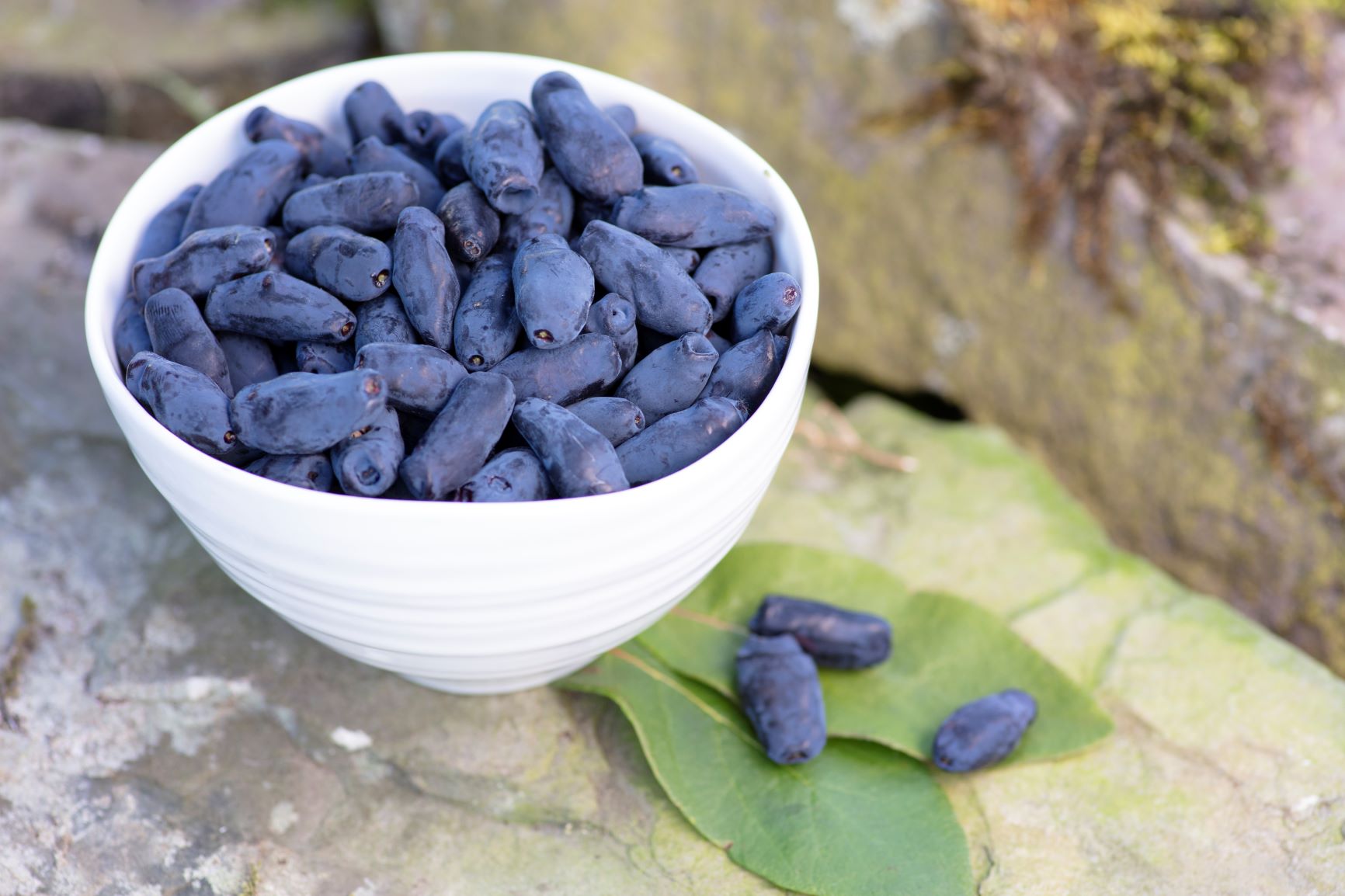
Japanese beginnings – the haskap
Peter explains what sparked Stewart’s interest: “They’re a member of honeysuckle family of plants and are well adapted to cold weather, which makes them suitable for growing here in Scotland. They can tolerate down -20°C and the flowers down to -7°C, which is very unusual for any fruiting plant.
“They’ve also long been cherished for their health-giving properties. They’re like a blueberry on steroids, full of anthocyanins, antioxidants and vitamins with a deep purple juice and a sweet tangy flavour. I think they could be classed as the next superberry.
“From a farming perspective, they are also very amenable to mechanical harvesting, which is a great attribute at this time of scarce and expensive labour.”
They’re already grown commercially in Canada, Siberia and Poland. So, after doing some research and trials at their farm in Invergowrie, near Dundee, Stewart and a group of others interested in this new berry went to Canada to see how it was grown there.
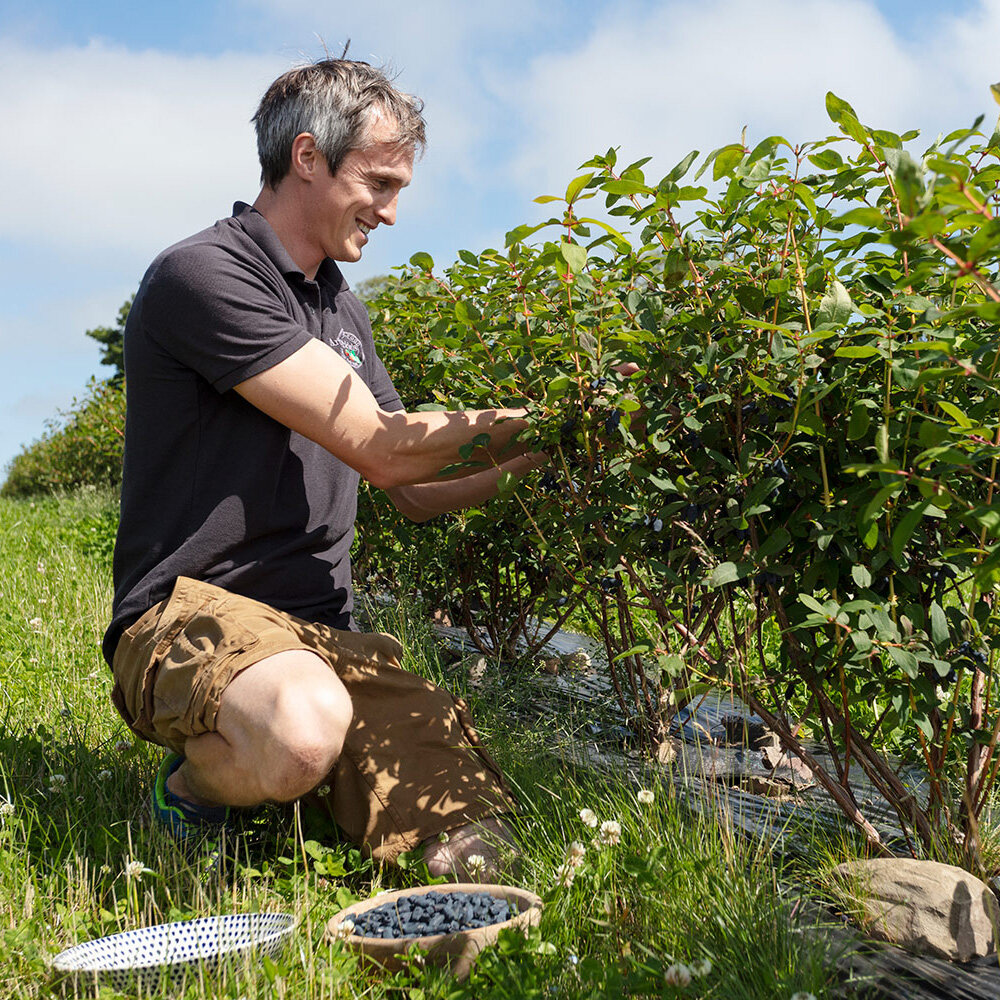
“The Scottish Honeyberry Growers Cooperative grew out of that and there are now eight growers with approximately 72 acres of orchards, which is quite considerable,” says Caroline Black, who works for the Scottish Honeyberry Growers cooperative. “It’s the biggest UK commercial honeyberry growing association in the UK, so we’re very proud of that.
“There are members who have different and varying sizes of orchards, some bigger, some smaller. But as a co-op, they all work and share together growing about 15 different varieties, each with different attributes.”
Creating a honeyberry market in the UK
Proving they can grow in Scotland is one thing. Creating a market is another. So the group came to the Hutton.
Honeyberries weren’t entirely new to the Hutton. Former Hutton blackcurrant breeder Dr Dorota Jarrett had been interested in novel crops and crop diversification, including honeyberries. Doctor Louise Gamble, soft fruit High Health facility manager here at the Hutton, says, “Dr Jarrett is from Poland, which is one of the countries where honeyberries have been grown commercially. So, with Arbuckles, she was keen to help bring a fifth berry to Scotland’s soft fruit market and a knowledge transfer partnership was launched, supported by Innovate UK’s Knowledge Transfer Partnerships programme.
“There were a lot of different areas within this project, including understanding the agronomy of the crop, but also marketing, understanding their nutritional value and trying to get honeyberries ‘out there’.”
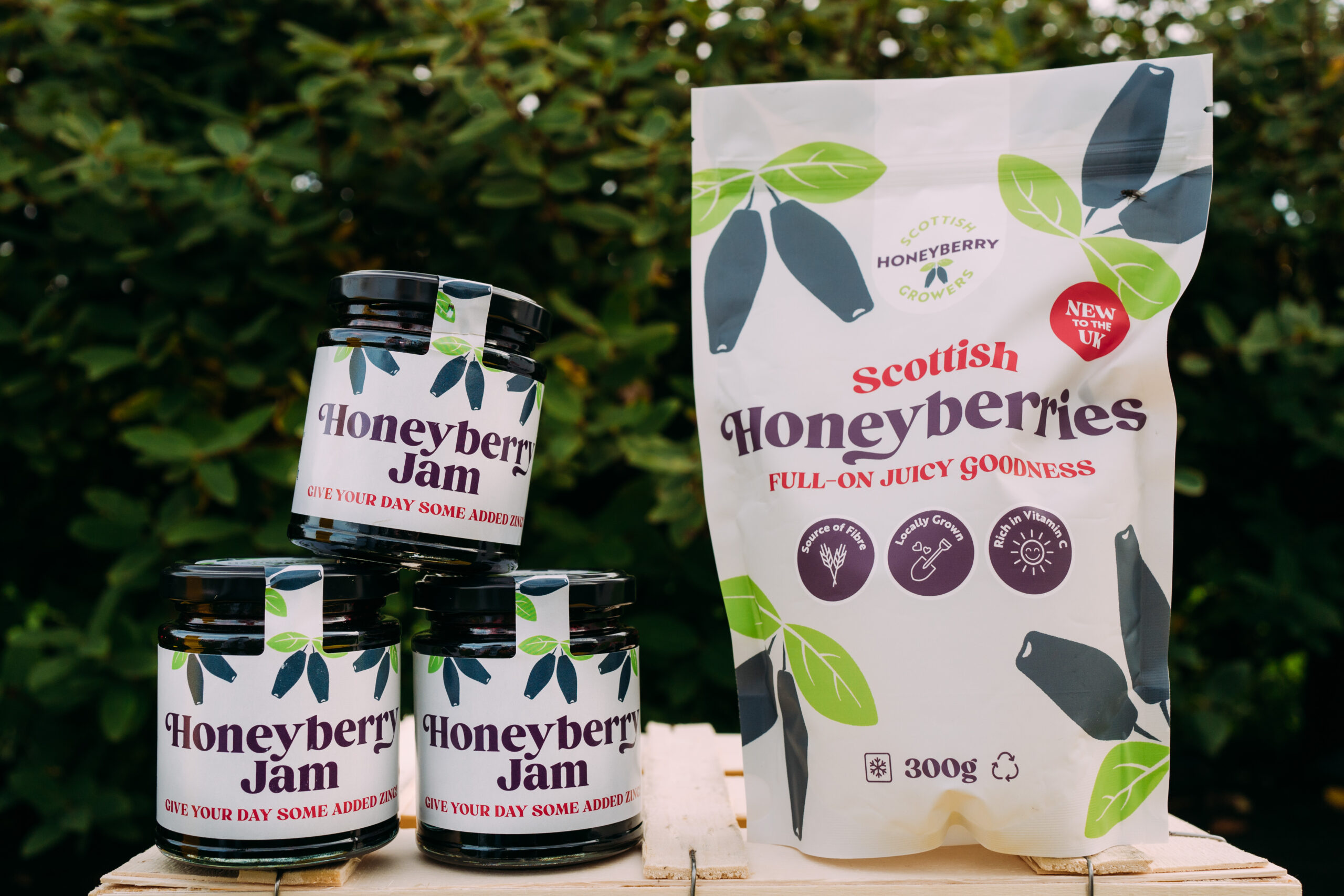
In terms of nutritional value, the berries made the grade as a superfruit. “We found that honeyberries contained extremely high levels of powerful antioxidants and in many cases significantly higher than in other berries like blueberries,” says Dr Gamble.
“We identified one particular compound, cyanidin-3-glucoside, a well-known natural anthocyanin, which has been shown in many research publications to have wide beneficial impacts on such things as the heart, by lowering cholesterol, and on the brain, as well as on things like degenerative diseases and lowering blood glucose levels. The list goes on and includes anti-inflammatory and gastroprotective and antimicrobial properties. So it’s easy to see why this berry should be really termed as a super fruit.”
“One of the peer-reviewed studies trialed honey berries on a running program,” adds Caroline. “They got 30 runners and did a peer-reviewed study that found if you ingested honeyberries for a week before a race, you’d decrease your running time by 2%. They put that down to the cyanidin-3-glucoside anthocyanin.”
Environmental benefits of the honeyberry
Other work by the Hutton looked at the environmental benefits of the crop. Because the plants are kept in the ground for 25 years or more, they improve soil stability and this in turn improves soil health and prevent soil erosion, says Dr Gamble.
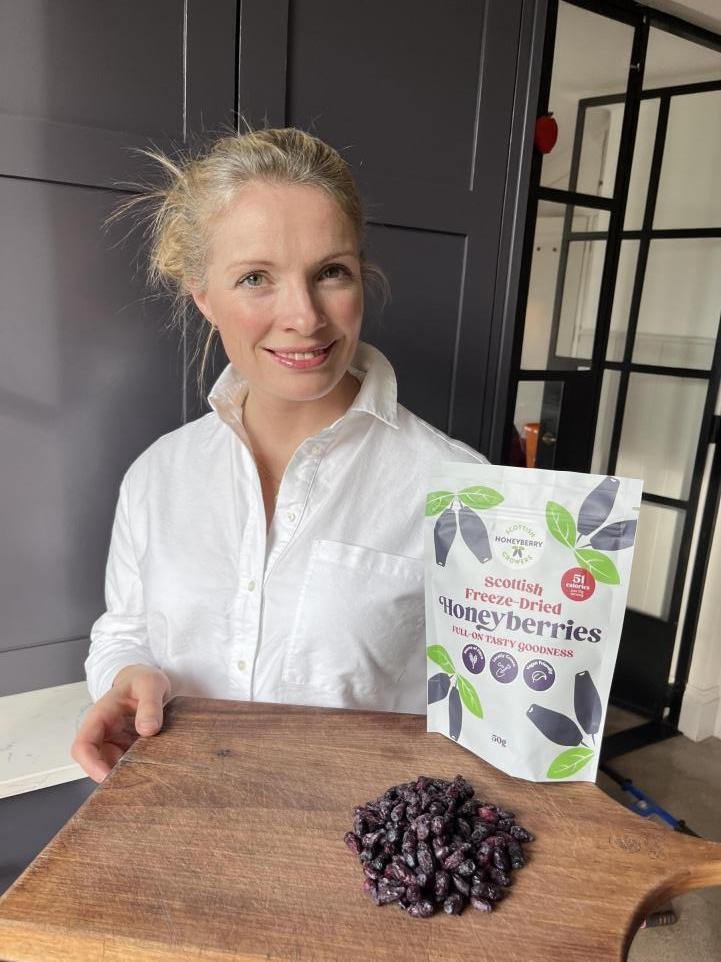
“The orchards also provide an early food source for our bee populations, which is really important,” she says. “Honeyberries also really need pollinators, so the growers are keen to improve and increase their pollinator populations.” They also attract lots of other wildlife, from bats to deer and hares, helping boost biodiversity, adds Caroline.
Honeyberries also have other benefits for growers, including producing an early fruiting crop. “They are the earliest fruiting outdoor crop of the whole of the the the fruit crops that we grow,” says Peter. “They start to produce flowers in early March, which is really early because they can tolerate the cold, then fruit at the end of June, beginning of July, which is also, generally, a good weather window to get the crop harvested.”
Getting the superfruit to market
While the cooperative was set up in 2017, the bush orchards take a while to establish, so it has only been the last three years that the group has been able to sell the fruit.
Because of the current nature of the fruit, in that it all needs to be harvested at the same time and is quite soft, it needs to be frozen straight away for storage and then sold in that form or else freeze dried for sale. This means they can be stored for up to 18 months.
“Freeze dried is also a really tasty way of eating them and you can use them for snacking, adding to your breakfast or smoothies, as an ice cream topping or in salads and even in baking,” says Caroline. “My daughter makes marshmallows and meringues and the color is so vivid.
“We’ve covered them in chocolate, creating beautiful dark, milk and white chocolate covered honeyberries, and we’re going to make yogurt coated ones this year too. Their color is so incredible that even if you put one or two of the freeze-dried berries into your gin and tonic, your glass of champagne or Prosecco, the color seeps out of the berry into the drink.”
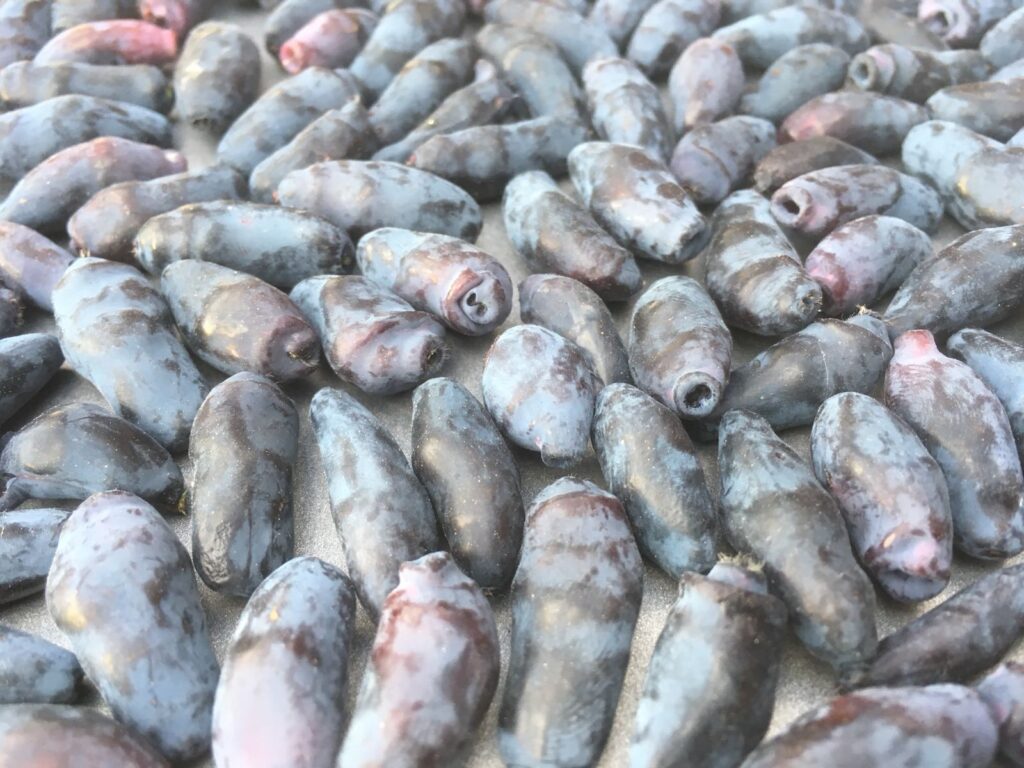
The fresh berries are also being made into jam, which Caroline says is fantastic on toast, crumpets or scones, but also mixed with yogurt or ice cream and even porridge or to give flavour to gravy.
Next steps for Scotland’s next superfruit
This year’s focus for the cooperative is working with bigger retailers to get honeyberries into frozen fruit isles to make them more available in a more cost-effective way than freeze drying.
There are also lots of collaborations being worked on. A gin and ice-creams have already been created, but there are many other areas to explore, says Caroline.
Further down the line, there could also be potential to continue developing the fruit so that it could be sold fresh. In fact, part of the knowledge transfer partnership was looking at the potential for them being produced and sold as fresh fruit and there were some crossing experiments. This means there is a germplasm collection at the Hutton which could be tapped in future to help unlock more potential from this super fruit.
It’s an exciting prospect, as Caroline says: “Honeyberries are Scotland’s new super fruit. It’s huge for Scotland. We import every day into the UK, goji berries and Asahi berries, which come from the Amazon rainforest, when we can grow these berries. It’s a real success story Scotland should be proud of.”
For more information, visit:
Scottish Honeyberry Growers | The Honeyberry Experts
Watch: Fruit for the Future – the Honeyberry
Blueberries on steroids: Scotland’s new super fruit
This work was developed into a Knowledge Transfer Partnership project in collaboration with the North of Scotland KTP Centre. The project was co-funded by UKRI through Innovate UK and the Scottish Funding Council. Innovate UK Knowledge Transfer Partnerships (KTP) bring together forward-thinking businesses and organisations, academics, and graduates to solve complex innovation challenges which help our economy, society, and environment.


Disclaimer: The views expressed in this blog post are the views of the author(s), and not an official position of the institute or funder.
